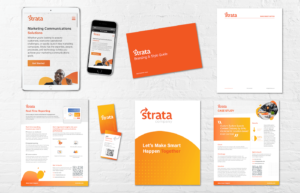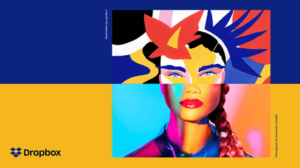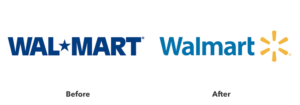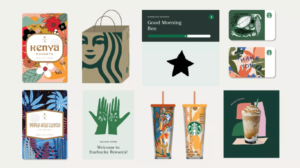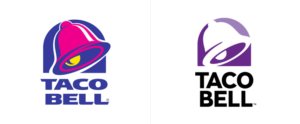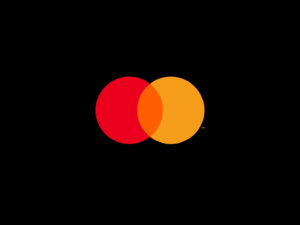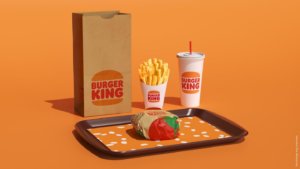How to Attract Your Audience
Video ads aren’t anything new, but keeping up with the rise of their increasing online presence is. Most of us don’t even realize how often we come across video ads. With so many different apps and sites, it’s important to get your company’s video ads out there, in the right places, and noticed. The key is to look beyond traditional practices and dig deeper into the variety of different ways and places you can utilize them. Follow along as we take you through best practices for video ads.
Rise of Video
With the rise of social media and its many marketing uses; video advertisements have been more popular than ever before. So popular that, in the past 30 days, more video content has been uploaded than video created by major U.S. television networks in the past 30 years. Moreover, it’s estimated that the average person currently spends 100 minutes every day watching online videos. This is a 19% increase compared to daily viewing minutes in 2019, which stood at 84. What all of this means is that it’s not just that people are watching more video than ever before, but that competition for this space is on the rise. Stay on top of new trends and ways to engage your audience over your competitors with our five tips and tricks, below.
1. Choose the Right Video & Placement
The right video placement can be the determining factor for your video advertising success. Before anything else, make sure your company has a clear idea of where you want these ads to be – and where they’ll best meet your potential customers. Here are four highly successful video ad placements to keep in mind as you’re getting started.
Skippable in-Stream Ads: Skippable, in-stream ads play before, during, or after other videos. After five seconds, the viewer has the option to skip the ad.
Non-Skippable in-Stream Ads: Non-skippable in-stream ads are 15 seconds (or shorter) and play before, during, or after other videos. Viewers don’t have the option to skip the ad.
Native Video Ads: This video ad format blends in with the website’s layout for a seamless interaction.
In-Banner Video Ads: In-banner video ads are videos built inside a banner ads.
Knowing these four placements can allow for your brand and message to be properly delivered the way you’d like it to be within your diverse video ads.
2. Captivate
When we say captivate, we mean make a good first impression. It’s best to keep your videos around 15-60 seconds, because most of your audience may drop off if your ad drags on too long. The message may begin to get drawn out and blurry, causing the viewer to forget it. Short and sweet is the rule of thumb, and grabbing their attention in those first 3-5 seconds is key. You really don’t have much time before the viewer may click “skip ad” or exit out completely. Keep users engaged by using upbeat music, compelling questions, humor and more, based on your brand voice. Once you have your general ad idea ready, figure out the best place to position the ad. 79% of the people say a video ad has convinced them to buy a product or software – so make sure its length and creative makes it memorable. Not sure where to start? Take a look at one of our personal video ads below for inspiration.
3. Personalize
Online video ads tend to differ heavily from traditional television ads. This is primarily due to the personalization of online ads. Using personalization tactics can give you an impactful advantage over your competitors, so take advantage of this and research and study your customer demographics to better understand their behavior and buying patterns to properly place your ads in the right places. For example, if one of your demographic audiences viewed your services and clicked through the contact us page, but didn’t submit any information, you can infer that they got the chance and had the time to go through your website (showing some interest) and look over your services, but weren’t ready to take any next steps. In this case, a video ad with personalization could be used to help them progress, reading something like, “Learn more and get in contact with xyz to see how x company can help you with…” This way, you’re serving as an outlet and solution to their unanswered questions, and gently pushing them make that next step, instead of placing an ad for them to see that doesn’t apply to their current situation. The same goes for the placement of the video ad. If you find that the majority of your audience is viewing your content on Facebook or Instagram, place an ad within these platforms. Similarly, if you’re communicating a lot through email with potential customers, place a video ad in an email. An initial email with a video ad can receive an increased click-through rate of 96%. And, using the word “video” in your email’s subject line can increase open rates by 19%, click through rates by 65%, and cut the number of unsubscribes by 26%.
4. Make it Relevant
Make sure your ads are relevant. Don’t just interrupt your viewer in the middle of their browsing or shopping – add value to their day. Make them do a double take when scrolling to keep your company top of mind for your high performing audiences. The best way to do this is by empathizing with their needs and pain points, especially right off the bat (like we said, in that first 3-5 second). It’s helpful to create different or slightly different versions of the same video ad to ensure they fit seamlessly into whatever page they are placed on.
5. Represent Your Brand
Be sure, possibly above anything else, that each video is a good representation of your brand. Add a logo into the corner of the ad, or place it strategically within the video on certain frames. 3X more people are engaged with an ad when a brand name and message is presented in the first 10 seconds. Also be sure to include a clear & concise call to action (CTA), and use ad copy space to provide additional information about your product or service that didn’t make it into the video. You can even try adding a short teaser phrase or question to the video that compels people to view longer or check out your website, blog, landing page, or other platforms.
Reach Your Target Audience
Lastly, partner with advertising creatives to get your video ads done efficiently and in a timely manner. Having captivating, personalized, relevant information that’s positioned correctly will ultimately put your company in the best position possible to reach your target audience. If you’re looking to learn more about video ads, feel free to contact our skilled creative marketing team, here.
With the Top 10 (Other) Best Rebrands & Refreshes
We can’t believe we’re already celebrating the one-year anniversary of Strata’s brand refresh. It’s been quite a year (to say the least). But we can honestly say that, with all of the struggles of 2020-2021, our brand refresh wasn’t one of them. If it did anything (and it did a lot), it definitely brought us together, made us more confident, and better showcased our personality, vision, team, and solutions. The brand refresh catapulted Strata into 2020, helping us solidify our style and services, attract new talent, and stay inspired.
When we decided we needed a new look – we had to pick between a full rebrand or a refresh. For us, the answer was easy. A complete rebrand would have required scrapping our identity and starting from scratch, where a refresh allowed us to keep our main identity and strategy intact. Our brand was strong with our current clients and we had a great reputation as problem solvers and solutions experts – so a refresh was perfect for what we needed to do.
With any rebrand or brand refresh – “consistency across all channels is key”. Over the past year, we’ve ensured that all our materials – from website to print, are on-brand.
Since we now have a bit of rebrand and refresh experience under our belts, we wanted to take a look at the top 10 best company rebrands and refreshes (in our eyes) besides Strata’s, of course.
Our Top 10
Dropbox
Dropbox refreshed its brand in 2017, and it was nothing short of successful. The company worked with design studio “Collins” to create a cleaner and simpler logo and lots of illustrative elements to better connect with their primarily creative and collaborative audience.
Airbnb
Airbnb did a full rebrand in 2014 with Design Studio, sending their team of designers to 13 cities to truly immerse themselves in Airbnb’s offerings, community, and mission. It resulted in a beautiful brand that differentiated Airbnb from its similar competitors. The CEO of Airbnb even stated, “When I look at this brand, I suddenly realized everything I’ve been trying to say, now we have a way to express it.”
Walmart
“There are very few companies in the world that managed to change the public perception of their brand as successfully as Walmart did.” In 2008, Walmart made this change to get away from their “always low prices” slogan that often-made customers feel like it was also “always low quality”. They also wanted to steer clear of the questionable corporate practices they were called out for in the early 2000s. So, Walmart did a complete 360 with a whole new brand from redesigned stores to a new look and personality.
Southwest
We love this brand refresh because it reminds us of ours. Without a complete overhaul, Southwest changed its look and logo to showcase their humanity and heart – literally.
Guinness
Good old Guinness. Many love it, others don’t, but it always holds true that Guinness makes us feel like we’re back in the olden days, sipping a brew in the pub. Instead of following the crowd of flat logo designs, Guinness actually added detail to its logo in 2016, working “with real harp makers to breathe new life into the legendary logo” that “could be built into an actual harp that would work properly and be in tune.”
Starbucks
Starbucks is loved by many – and dare we say it – is mainly successful because of its brand (although we do love it a latte). They’ve made slight changes over time to the brand, always increasing their user experience and recognizability with a “distinctive color scheme, typography, and illustrations.”
Taco Bell
You may not have really noticed Taco Bell’s brand refresh until now – but its cleaner, simpler look has helped it stay relevant among its many fast food and taco chain competitors. Along with this well-done refresh, Taco Bell has been named “one of the healthiest fast-food chains in America,” so, they’re doing quite well.
Mastercard
In 2016, Mastercard conducted a refresh with Pentagram to emphasize “simplicity, connectivity and seamlessness.” It’s simple and sleek look of just the famous two overlapping circles is surprising, but logic-based. “The change follows research by Mastercard that found that more than three quarters of people asked were able to identify the brand from the two interlocking circles alone.
Burger King
For the first time in 20 years, Burger King conducted a brand refresh with a new logo, uniforms, and packaging – and we love its nostalgic look. The new logo is actually very close to BK’s logo design from the 70s-90s. The creative agency on the project wanted to “pay homage to the brand’s heritage with a refined design that’s confident, simple and fun.”
Intel
Last but not least, Intel’s 2020 refresh caught our eye because of its subtle hints to past logos. Again, it refers back to their past while being currently relevant. “This new logo includes elements of both (past logos), but in a much more subtle, minimalist way.”
To take a more in-depth look back at our brand refresh, visit our original refresh blog, here. If you’re looking to make your branding and marketing communications more effective and efficient, give Strata a call.
Get to Know These Tracking Treats
Within the world of marketing, there’s a lot of buzz around the topic of cookies and what the future holds for tracking website visitors and generating personalized advertisements. While the topic’s relevant, not many people are completely informed on what cookies are and the impact they have on our ability to create better customer experiences. In this blog, we’re going over what cookies are, the differences between first-party and third-party cookies, and the future of online tracking.
So, What Are “Cookies”?
Although many of us are “foodies” here at Strata, and could talk about a good dessert all day, this blog isn’t about Oreo or Chips Ahoy. We’re talking about web “cookies” – text files put into a user’s browser page while they’re visiting a website. Cookies are known by several names – web cookie, internet cookie, browser cookie, or HTTP cookie, but they’re all the same, and in general, they track and log browsing activity against identification data such as IP addresses. Why is this information useful? Primarily, cookies help save information about a user in order to personalize their website experience and the advertisements they’re shown.
While cookies have enjoyed a childhood free of regulation, their “free-willy” time is coming to an end with recent regulatory initiatives driven by an increase in public concern over internet privacy. The first major change came when General Data Protection Regulation (GDPR) made consent mandatory in order to track visitors on a website. To give you a feel for the impact of GDPR – about 11% of users click to “accept all cookies”, 76% of users ignore the banner completely, 12% close the cookie banner, and 0.5% of users actually open up cookie settings, read through terms and agreements, and sometimes make adjustments. These numbers are misleading, however – what GDPR essentially did was force the user to choose between viewing the desired content and accepting cookies OR (with exceptions) leaving the site entirely. So, while it looked good – almost all of the visitors in the stats above were still being tracked.
At this point, you might be thinking that we need to eradicate the cookie – if so, hold that thought. Cookies almost always make your experience on the web better – they’re your friend, not your enemy. To solve privacy concerns – which is the intent of all privacy-centric regulation – we’ll need to jump down a level. There are two major types of cookies – First-Party and Third-Party. Both contain the same pieces of data and technically can conduct the same actions, but they’re created differently, used differently, and have different benefits for distinctive situations. Let’s get into each one.
First-Party Cookies
Simply put, first party cookie technology is usually installed or authorized by a website’s owner and only tracks that user across that specific website. First-party cookies are set on the publisher’s server or on the JavaScript loaded to the website. Their defining technical feature is that, for the most part, only the domain that created the cookie can access it, thus they are seen as less invasive and are more welcomed by users.
These cookies allow website owners to collect analytical data, remember individual user settings or content (remembering what’s in a user’s shopping cart, their language preferences, or their username and password), and perform useful functions to provide better user experience. That last part is important – first-party cookies primary purpose is to deliver more relevant, user-friendly experiences to individuals. If you’d like to see the difference they make, just clear your browser cache and visit some of your favorite websites.
Third-Party Cookies
Contrasting first-party cookies, third-party cookies are not created by the domain of the website the user’s currently visiting, and therefore, can often seem intrusive and un-welcomed. This type of cookie is placed by another site, such as an advertiser or social media platform like ad.doubleclick.net – and is separate from the home domain. These cookies are usually used for online advertising purposes, and are added through a script, code, or tag to track a user across several websites. Enabling these cookies can help users see relevant discounts and catered advertisements, but can also possibly involve them in a breach of privacy. For this reason, third-party cookies are blocked by many browsers, and are currently being chastised as unethical.
Phase Out of Third-Party Cookies
In February of 2020, Google announced its phase out of third-party cookies by 2022. When this occurs, it will cause 56% of web browsers (the percentage that use Google Chrome) to block their use automatically. As stated by Google, their reasoning for forcing this phase out is to increase security and protect the user. You have to wonder, however – are ethics the driving principle here, or is this a strategic move to further corner the digital advertising market?
All-in-all, this change won’t make as much of a difference as you’d think, as a 2017 study showed that 64% of tracking cookies were already being blocked as users surfed the web. Those at Google seem to think that third-party cookies will not be replaced by another resource due to increasing privacy concerns, but they’ll continue to “support first-party relationships on our ad platforms for partners, in which they have direct connections with their own customers.”
What’s Next for Cookies?
No matter what the circumstances with third-party cookies, first-party cookies are definitely here to stay. If configured correctly, they’ll continue to function within most browsers – even if those browsers block third-party cookies. So – fear not – first-party cookies will provide marketers hindsight and insight on your website visitors for the foreseeable future – even if you might now be forced to use Google to reach them.
Now that you know a bit more about cookies, you may be motivated to improve and optimize your next digital marketing campaign. If so, contact us today.


